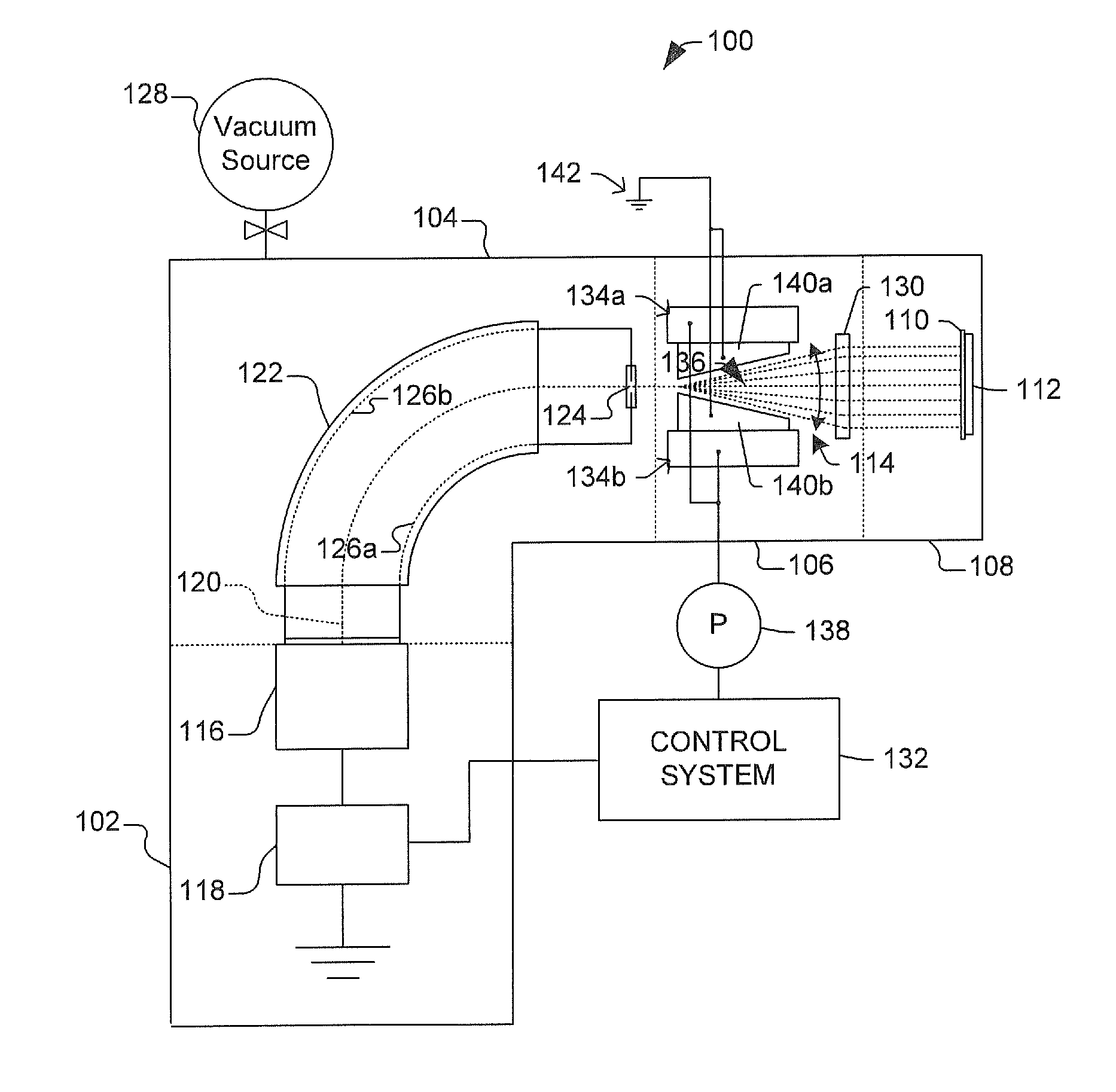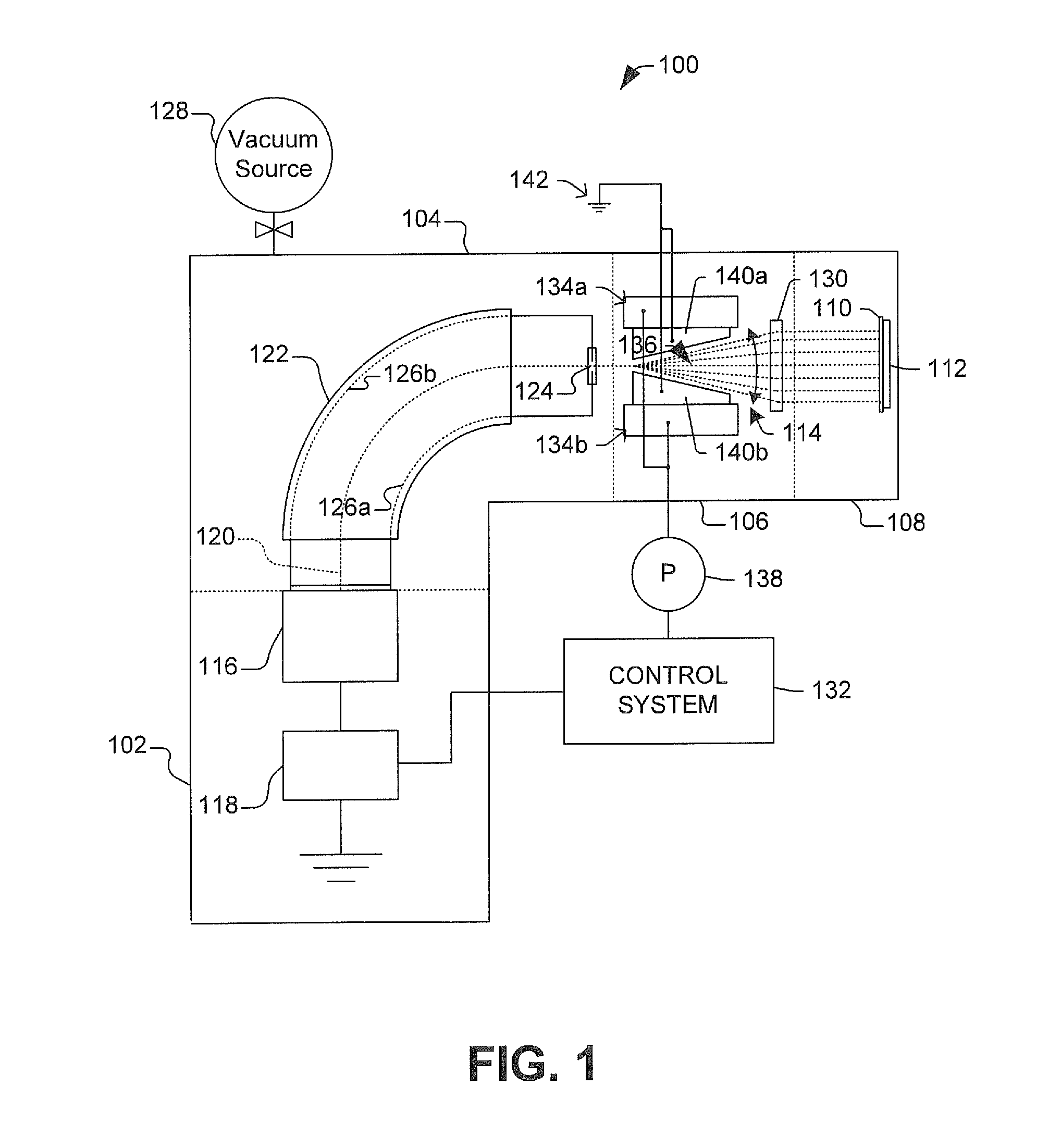Magnetic Scanning System with Improved Efficiency
a scanning system and efficiency technology, applied in the direction of beam deviation/focusing, instruments, beam current loss, etc., can solve the problems of large beam envelope, high power requirements of magnetic scanners, and loss of beam current, so as to facilitate ion implantation and reduce the amount of power required
- Summary
- Abstract
- Description
- Claims
- Application Information
AI Technical Summary
Benefits of technology
Problems solved by technology
Method used
Image
Examples
Embodiment Construction
[0025]The present invention will now be described with reference to the drawings wherein like reference numerals are used to refer to like elements throughout, and wherein the illustrated structures are not necessarily drawn to scale.
[0026]FIG. 1 illustrates an ion implantation system 100 having a source terminal 102, beamline assembly 104, magnetic scan system 106, and end station 108, which are collectively arranged so as to inject ions (dopants) into the lattice of a workpiece 110 according to a desired dosing profile. In particular, FIG. 1 illustrates a hybrid-scan ion implantation system 100, wherein a moveable stage 112 is operable to translate the workpiece 110 along a first axis (e.g., into the plane of the page in FIG. 1) while the magnetic scan system 106 provides a scanned ion beam 114 along a second axis perpendicular to the first axis. By scanning the ion beam with respect to the workpiece in this manner, the entire surface of the workpiece can be implanted until a desi...
PUM
 Login to View More
Login to View More Abstract
Description
Claims
Application Information
 Login to View More
Login to View More - R&D
- Intellectual Property
- Life Sciences
- Materials
- Tech Scout
- Unparalleled Data Quality
- Higher Quality Content
- 60% Fewer Hallucinations
Browse by: Latest US Patents, China's latest patents, Technical Efficacy Thesaurus, Application Domain, Technology Topic, Popular Technical Reports.
© 2025 PatSnap. All rights reserved.Legal|Privacy policy|Modern Slavery Act Transparency Statement|Sitemap|About US| Contact US: help@patsnap.com



